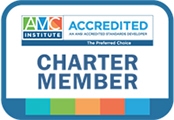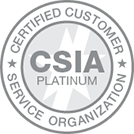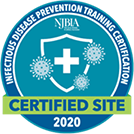Social media is an integral part of many of our lives. Whether in line at the grocery store, killing time on a train, or in the break room at work, we want to stay connected.
For better or worse, that's become the way of the world, which means that when planning on-site experiences for conferences and meetings, social media should be laced throughout your programming and events.
I want to share with you some practical advice for planning, publicizing, and executing a successful on-site social media strategy.
Evaluate your audience's social media preferences.
Depending on the members that make up your association, determine what the most effective social media channels are to reach your event attendees.
Are they big on Facebook? Then plan to develop a strategy that is more discussion or visual content-based.
Are they a Twitter crowd? Then be prepared to have someone live-tweeting sessions, develop a conference hashtag well in advance, and research your biggest advocates on the network to make your own job easier.
Publicize event social media early and often.
Start thinking about the social media experience for your conference as soon as you start planning it for the next year. You may choose to use a hashtag to distinguish your meeting on social networks and to make posts from it easily searchable. If so, decide on one as early in the process as possible and make sure all those involved in planning know about it. Include it on all promotional materials or emails so that it gets in the head of your attendees. Use it in social media messaging leading up to the event and send out a few emails before the event, letting attendees know to use it when posting on-site.
Determine on-site social media responsibilities before the event.
Before you even arrive on-site, determine who will be doing what with regards to social media. Is one team member better with Twitter? Maybe you want to assign them to pop in and out of sessions and do live tweeting. Is someone a better photographer? Maybe you want to let them handle photo sharing channels like Instagram or Facebook. Regardless, make sure that responsibilties are clear and defined.
Pro Tip: Instagram's integration with other social platforms such as Facebook and Twitter makes it a good option for sharing photos to multiple networks, all within one interface.
Set up a conference social media dashboard.
When on-site, it can be useful to set up a dashboard that displays all social media channels and posts. A good way to do this is to sign up with Hootsuite, a social media management application. It's free to use up to a certain number of accounts, so I'd recommend setting up an account for your organization.Once you have it set up, create a "Stream" that features your event's Twitter feeds, hashtags, mentions of your account, and any retweets. You can also use it to view Facebook posts, as well as a number of other social media platforms.
This is a great way to set up a "home base" while you're on-site and to monitor social activity and conversations from your event attendees.
Publicize social media throughout the event and encourage participation.
What good is a well-planned and organized social media strategy if no one knows about it? You can solve this problem by publicizing any social media channels you’re using in event handouts, on signs around the conference venue, and in opening sessions. Why not ask your presenters to include relevant hashtags and their Twitter handles at the bottom of presentation slides? The point is, you need to get the word out through as many avenues as possible.
Pro Tip: Consider running a contest to encourage more social media engagement. For example, you could draw a winner from those who tweet using a conference hashtag. This is a simple and cost-effective way to drive participation.




